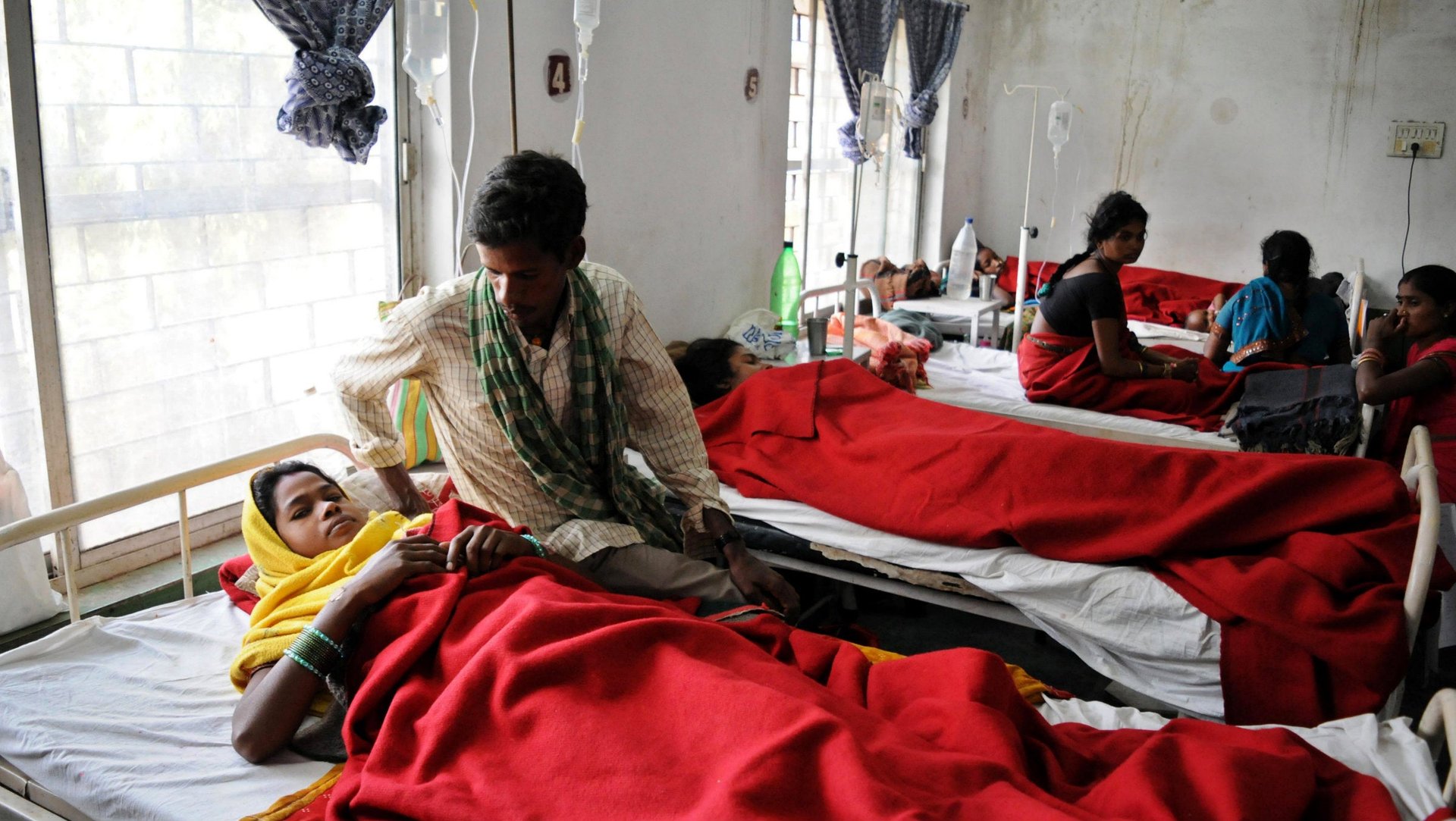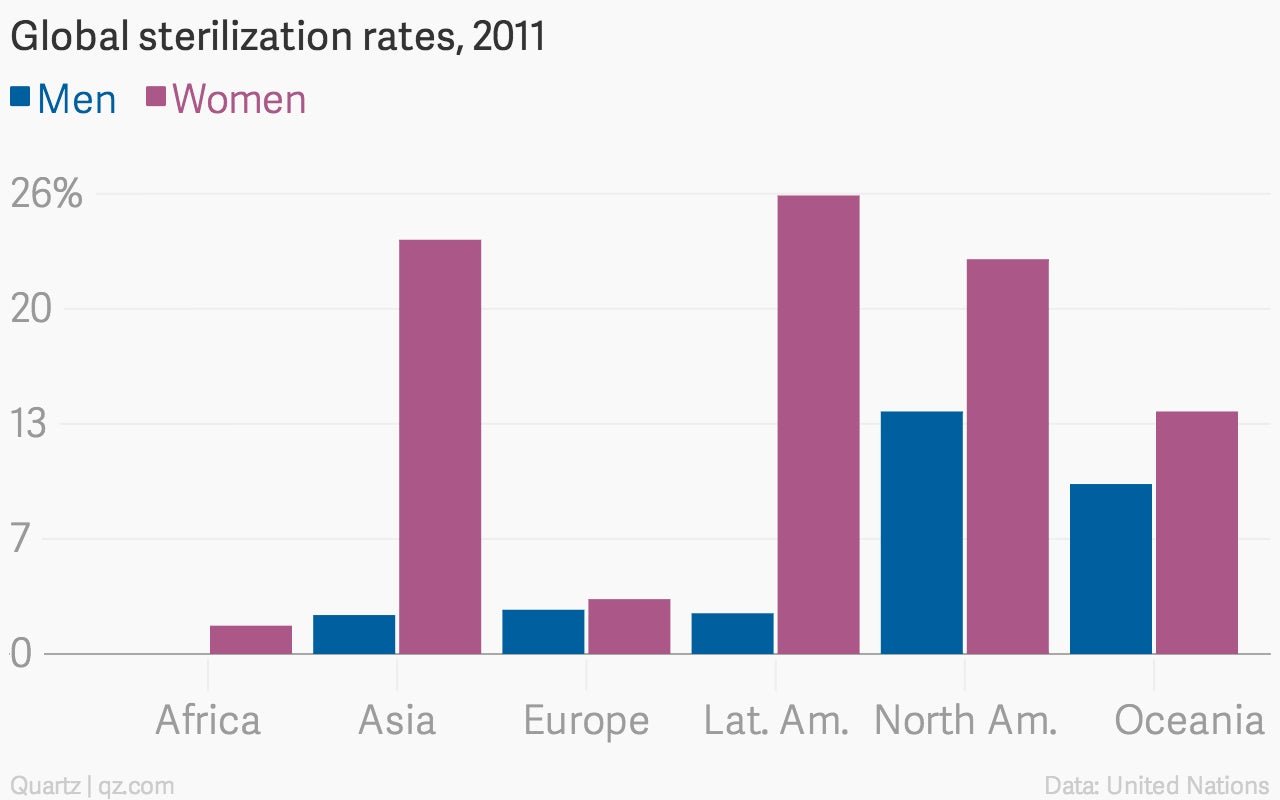Vasectomies are cheaper and safer than female sterilization—so why don’t more men get them?
This post has been corrected.


This post has been corrected.
At least 13 women in the Indian state of Chhattisgarh died this week, and dozens more were hospitalized, after a mass sterilization clinic run by a single doctor went horribly awry. Witnesses told the New York Times (paywall) that the surgeries took place in an “assembly-line atmosphere with little regard to hygiene or patient comfort.”
The shocking tragedy is only the latest to arise from the country’s blood-soaked attempts to control its population, which has resulted in the death of hundreds of women from botched sterilizations, as Quartz has reported. Dr. R. K. Gupta, who single-handedly conducted 83 surgeries in less than three hours in Chhattisgarh, received an award from Chhattisgarh state health ministry earlier this year for performing a record 50,000 surgeries.
But perhaps most of all, it highlights the massive disparity in cost and riskiness between sterilization for women and for men.
Tubal ligation, the most common method of female sterilization, costs three to four times as much as a vasectomy, depending on the market. Women are five times as likely to die from sterilization than men, the Encyclopedia of Women and Gender reports. And both procedures have similar success rates when it comes to preventing pregnancies.
Still, more than one third of married Indian women undergo sterilization, versus just 1% of Indian men. India isn’t that abnormal in that regard—around the world, more women then men undergo the procedure, and deaths occur in North Carolina as well as Chhattisgarh.

Women in India often don’t want their husbands to undergo a vasectomy, doctors at a no-scalpel vasectomy event in Delhi told The Wall Street Journal, because they fear he will “lose his strength and virility.”
But Human Rights Watch found when they investigated the issue two years ago that Indian officials were pushing female sterilization over vasectomies:
More than 50 health workers told Human Rights Watch that district and sub-district authorities assigned individual yearly targets for contraceptives, with a heavy focus on female sterilization. Almost all said that their supervisors or other higher-ups threatened them with adverse consequences if they did not achieve their targets.
A vasectomy can be performed in a doctors office, under local anesthesia, meaning the patient is awake the entire time, in 15 to 20 minutes. And the procedure does not typically result in any sexual side effects such as impotence. The Mayo Clinic lists under its “unfounded concerns” section any fears about sexual performance, permanent damage to sexual organs, increased risk of cancer or heart disease, and severe pain.
Back in Chhattisgarh, Gupta was taken into police custody today, and blamed the deaths on tainted drugs and medical supplies. He said it was his “moral responsibility” to operate on however many women turned up at the mass sterilization clinics.
“I am not the culprit. I have been made scapegoat,” he told Reuters. “It’s a mystery. I never came across any such complications in the past.”
Correction: A previous version of this post stated that Dr. Gupta was awarded by India’s health ministry.